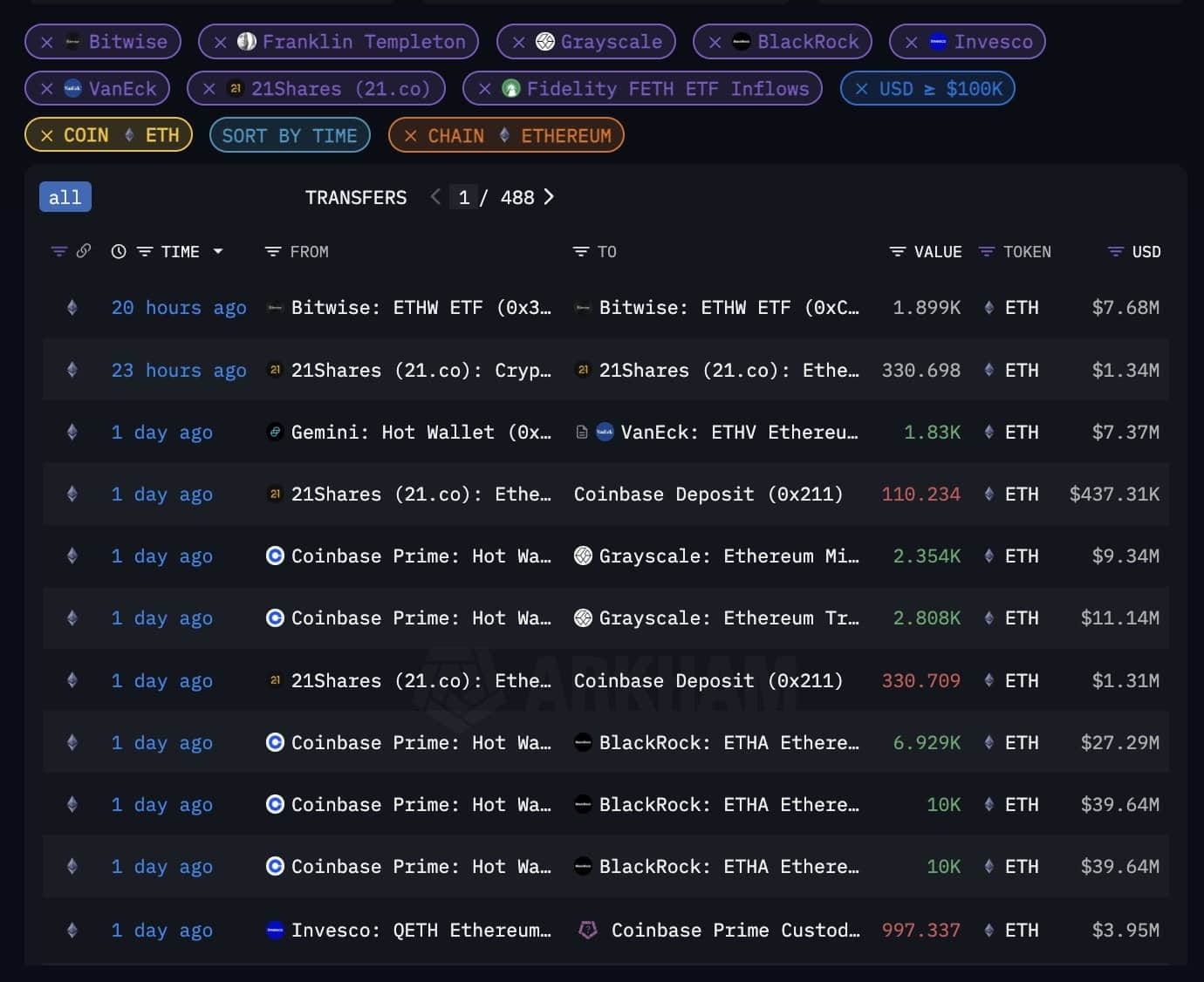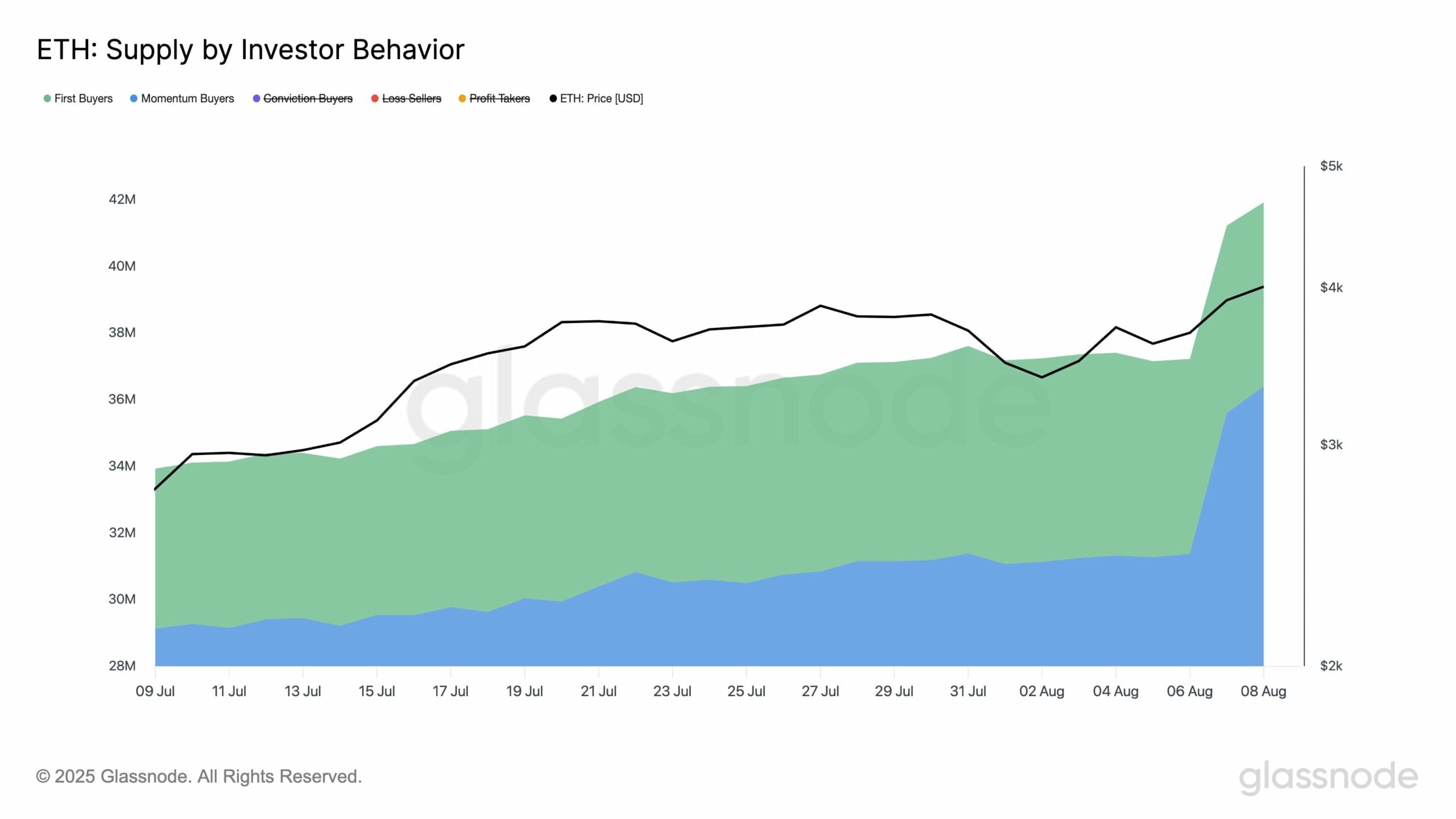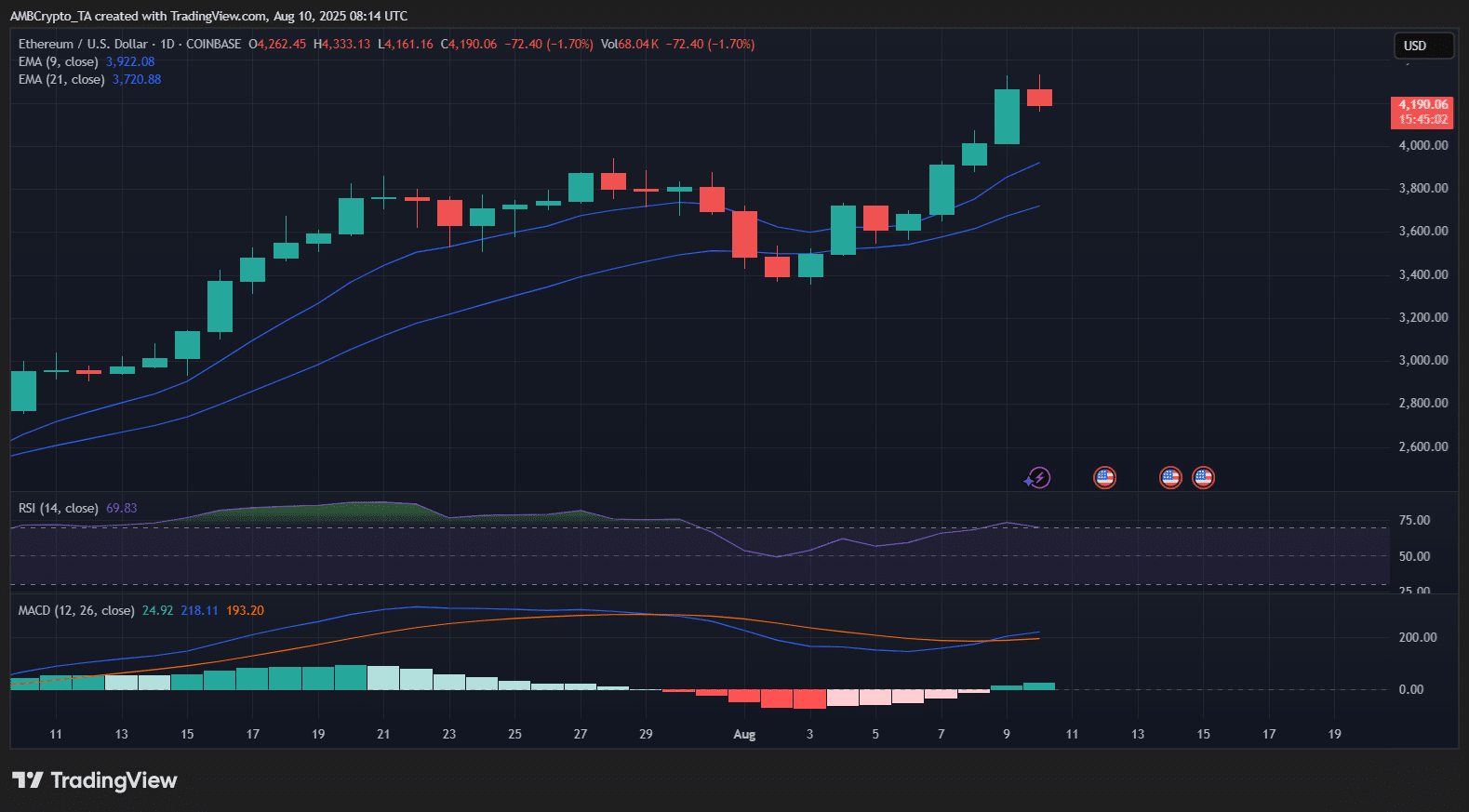Ethereum [ETH] has just stolen the spotlight from Bitcoin [BTC].
ETF inflows have disrupted the usual patterns, on-chain trends are on the rise, and big players are quietly entering.
But can ETH maintain this breakout and go further?
With the influx from Wall Street, ETH ETFs have outperformed Bitcoin.
According to Arkham Intelligence, the demand for ETFs in Ethereum has surpassed that of Bitcoin, with the trading volume of ETH products reaching $461 million in the last day, compared to $404 million for BTC.
 This surge is led by institutional giants—BlackRock purchased $250 million worth of ETH, Fidelity increased its holdings by $130 million, and Grayscale followed closely with an increase of $60 million.
This surge is led by institutional giants—BlackRock purchased $250 million worth of ETH, Fidelity increased its holdings by $130 million, and Grayscale followed closely with an increase of $60 million.
In fact, this is one of the strongest single-day institutional buying waves for ETH this year.
New buyers are flocking to ETH.
Glassnode data shows a sharp increase in the number of first-time homebuyers and momentum traders, driving the rise in new demand.
 That said, the number of steadfast buyers (those who continue to buy despite rising prices and are raising their cost basis) is also increasing, indicating a stronger market commitment.
That said, the number of steadfast buyers (those who continue to buy despite rising prices and are raising their cost basis) is also increasing, indicating a stronger market commitment.
Moreover, if buying pressure persists, the influx of new funds and the confidence of seasoned holders may lay the groundwork for a significant price increase.
ETH holdings are climbing, nearing a breakout region.
As of the time of writing, the Ethereum derivatives market is heating up, with the total open interest in futures reaching $51.61 billion, close to an annual high.
 Despite a slight pullback, the price trend remains strong, with ETH trading at $4,190, above its 9-day and 21-day EMA.
Despite a slight pullback, the price trend remains strong, with ETH trading at $4,190, above its 9-day and 21-day EMA.
Momentum indicators enhance the bullish outlook: RSI hovers just below the overbought region at 69.8, while MACD remains firmly positive.
 There is less than a $700 gap from the historical high of $4,891; the current structure of ETH suggests that there is a chance for price discovery this year.
There is less than a $700 gap from the historical high of $4,891; the current structure of ETH suggests that there is a chance for price discovery this year.
Of course, profit-taking could slow the upward momentum before any decisive breakout.

